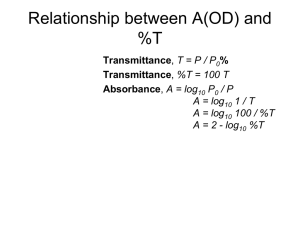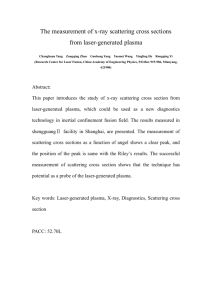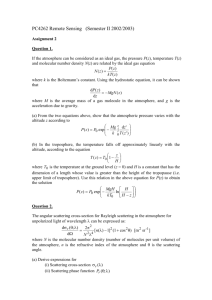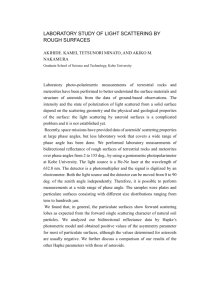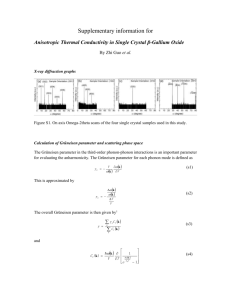Photoluminescence due to inelastic scattering processes of excitons
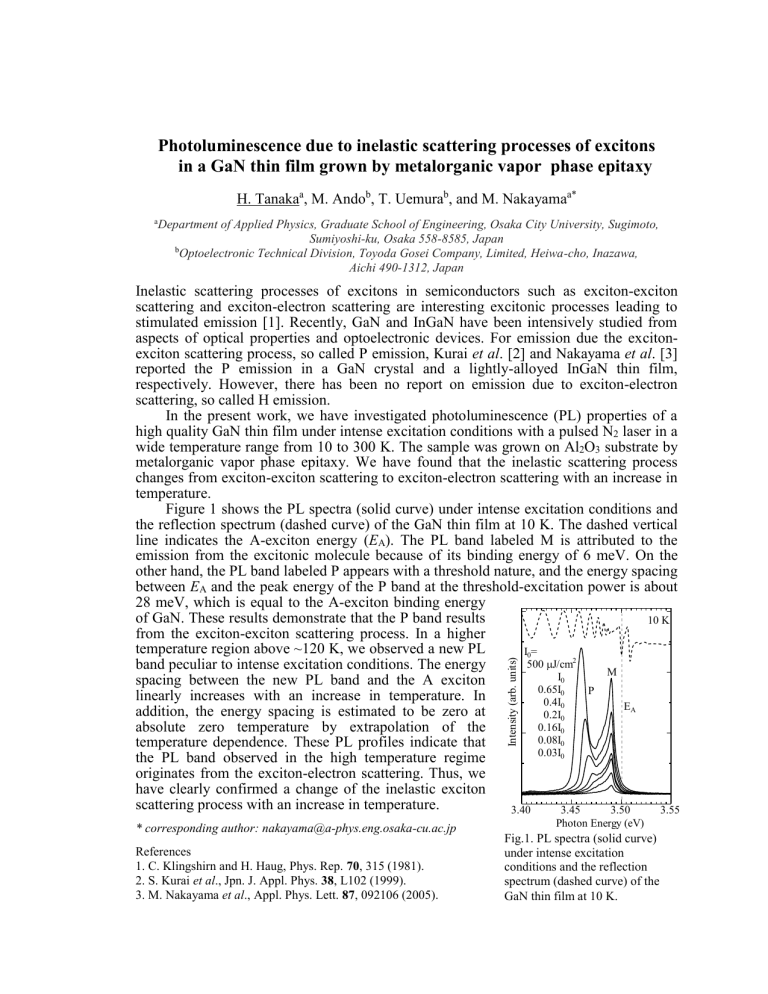
Photoluminescence due to inelastic scattering processes of excitons in a GaN thin film grown by metalorganic vapor phase epitaxy
H. Tanaka a
, M. Ando b
, T. Uemura b
, and M. Nakayama a* a Department of Applied Physics, Graduate School of Engineering, Osaka City University, Sugimoto,
Sumiyoshi-ku, Osaka 558-8585, Japan b Optoelectronic Technical Division, Toyoda Gosei Company, Limited, Heiwa-cho, Inazawa,
Aichi 490-1312, Japan
Inelastic scattering processes of excitons in semiconductors such as exciton-exciton scattering and exciton-electron scattering are interesting excitonic processes leading to stimulated emission [1]. Recently, GaN and InGaN have been intensively studied from aspects of optical properties and optoelectronic devices. For emission due the excitonexciton scattering process, so called P emission, Kurai et al . [2] and Nakayama et al . [3] reported the P emission in a GaN crystal and a lightly-alloyed InGaN thin film, respectively. However, there has been no report on emission due to exciton-electron scattering, so called H emission.
In the present work, we have investigated photoluminescence (PL) properties of a high quality GaN thin film under intense excitation conditions with a pulsed N
2
laser in a wide temperature range from 10 to 300 K. The sample was grown on Al
2
O
3
substrate by metalorganic vapor phase epitaxy. We have found that the inelastic scattering process changes from exciton-exciton scattering to exciton-electron scattering with an increase in temperature.
Figure 1 shows the PL spectra (solid curve) under intense excitation conditions and the reflection spectrum (dashed curve) of the GaN thin film at 10 K. The dashed vertical line indicates the A-exciton energy ( E
A
). The PL band labeled M is attributed to the emission from the excitonic molecule because of its binding energy of 6 meV. On the other hand, the PL band labeled P appears with a threshold nature, and the energy spacing between E
A
and the peak energy of the P band at the threshold-excitation power is about
28 meV, which is equal to the A-exciton binding energy of GaN. These results demonstrate that the P band results
10 K from the exciton-exciton scattering process. In a higher temperature region above ~120 K, we observed a new PL band peculiar to intense excitation conditions. The energy spacing between the new PL band and the A exciton linearly increases with an increase in temperature. In addition, the energy spacing is estimated to be zero at absolute zero temperature by extrapolation of the temperature dependence. These PL profiles indicate that the PL band observed in the high temperature regime originates from the exciton-electron scattering. Thus, we have clearly confirmed a change of the inelastic exciton scattering process with an increase in temperature.
* corresponding author: nakayama@a-phys.eng.osaka-cu.ac.jp
References
I
0
=
500
J/cm
2
I
0
0.65I
0
0.4I
0
0.2I
0
0.16I
0
0.08I
0
0.03I
0
3.40
3.45
P
M
Fig.1. PL spectra (solid curve) under intense excitation
E
A
3.50
Photon Energy (eV)
3.55
1. C. Klingshirn and H. Haug, Phys. Rep. 70 , 315 (1981). conditions and the reflection
2. S. Kurai et al ., Jpn. J. Appl. Phys. 38 , L102 (1999).
3. M. Nakayama et al ., Appl. Phys. Lett. 87 , 092106 (2005). spectrum (dashed curve) of the
GaN thin film at 10 K.




